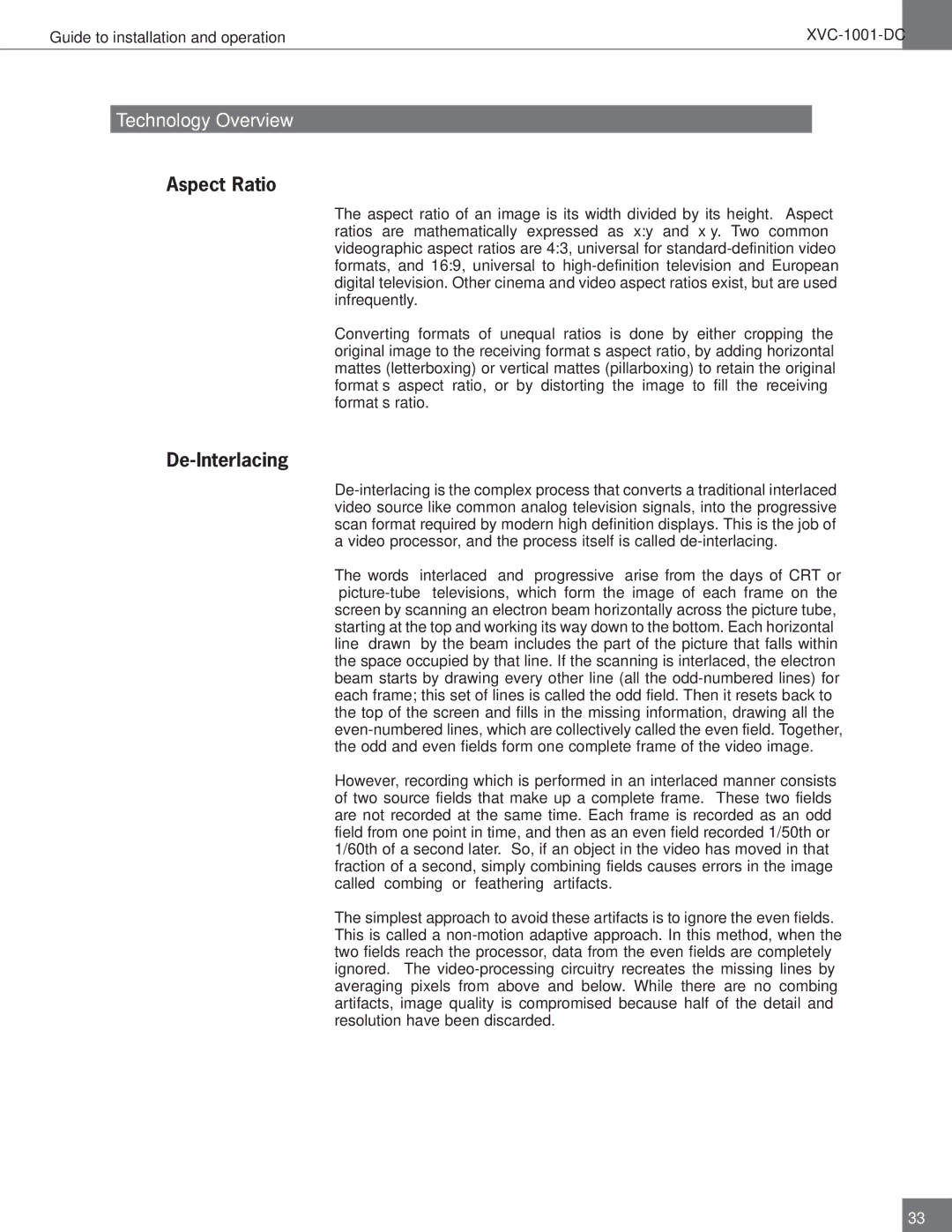Technology Overview
Aspect Ratio
The aspect ratio of an image is its width divided by its height. Aspect ratios are mathematically expressed as x:y and x×y. Two common videographic aspect ratios are 4:3, universal for standard-definition video formats, and 16:9, universal to high-definition television and European digital television. Other cinema and video aspect ratios exist, but are used infrequently.
Converting formats of unequal ratios is done by either cropping the original image to the receiving format’s aspect ratio, by adding horizontal mattes (letterboxing) or vertical mattes (pillarboxing) to retain the original format’s aspect ratio, or by distorting the image to fill the receiving format’s ratio.
De-Interlacing
De-interlacing is the complex process that converts a traditional interlaced video source like common analog television signals, into the progressive scan format required by modern high definition displays. This is the job of a video processor, and the process itself is called de-interlacing.
The words ‘interlaced’ and ‘progressive’ arise from the days of CRT or ‘picture-tube’ televisions, which form the image of each frame on the screen by scanning an electron beam horizontally across the picture tube, starting at the top and working its way down to the bottom. Each horizontal line ‘drawn’ by the beam includes the part of the picture that falls within the space occupied by that line. If the scanning is interlaced, the electron beam starts by drawing every other line (all the odd-numbered lines) for each frame; this set of lines is called the odd field. Then it resets back to the top of the screen and fills in the missing information, drawing all the even-numbered lines, which are collectively called the even field. Together, the odd and even fields form one complete frame of the video image.
However, recording which is performed in an interlaced manner consists of two source fields that make up a complete frame. These two fields are not recorded at the same time. Each frame is recorded as an odd field from one point in time, and then as an even field recorded 1/50th or 1/60th of a second later. So, if an object in the video has moved in that fraction of a second, simply combining fields causes errors in the image called “combing” or “feathering” artifacts.
The simplest approach to avoid these artifacts is to ignore the even fields. This is called a non-motion adaptive approach. In this method, when the two fields reach the processor, data from the even fields are completely ignored. The video-processing circuitry recreates the missing lines by averaging pixels from above and below. While there are no combing artifacts, image quality is compromised because half of the detail and resolution have been discarded.

